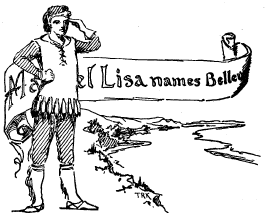|
the Fur Traders Came |
|
|
"From the bottom rose the beavers., |
|
|
|

|
|
|
40 |
|
|
|
|
which at once established friendly relations with the
Indians, trading guns, whiskey, cloth, beads and various
articles for valuable furs. |
|
|
|
|
41 |
|
|
John Jacob Astor's
conception of such a scheme and his daring in undertaking
it, distinguish him as one of the great commercial pioneers
of the country. |
|
|
42 |
|
|
|
|
pany purchased the interests of the Missouri Fur company,
and Peter Sarpy came up from St. Louis several years later
to take charge of it. He and his Indian wife, Nakoma, had
great influence over the Indians, and were helpful through
the interval separating the territorial government and the
early statehood. |
|
 |
 |
 |
MARDOS COLLECTION
© 1999, 2000, 2001 for the NEGenWeb Project by Pam Rietsch,
T&C Miller